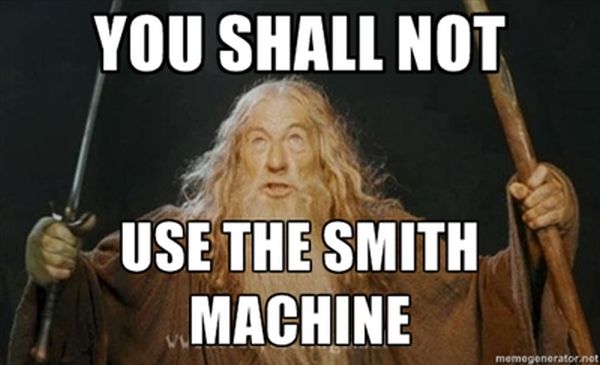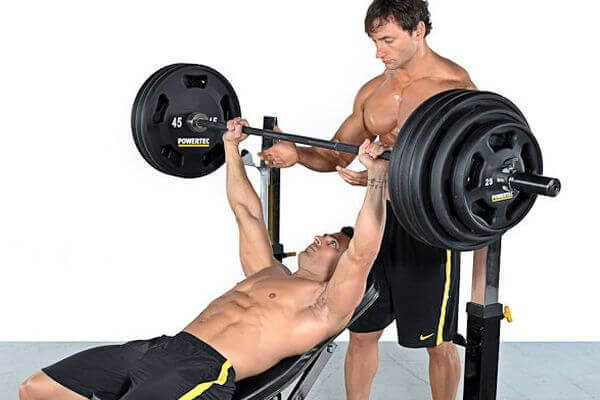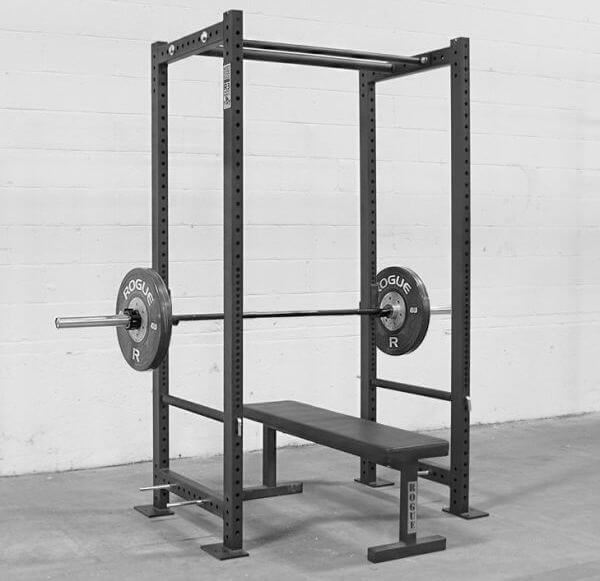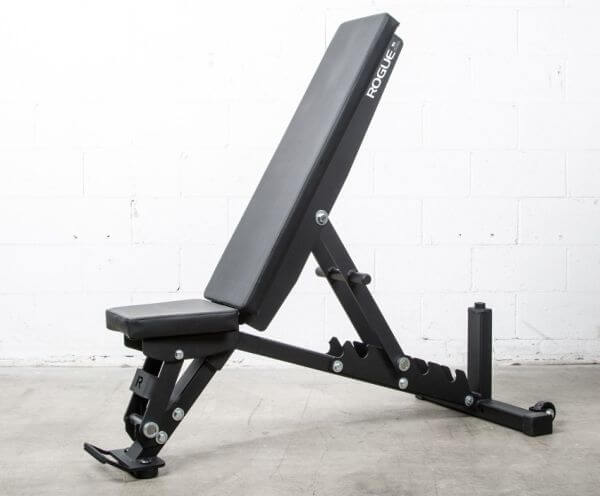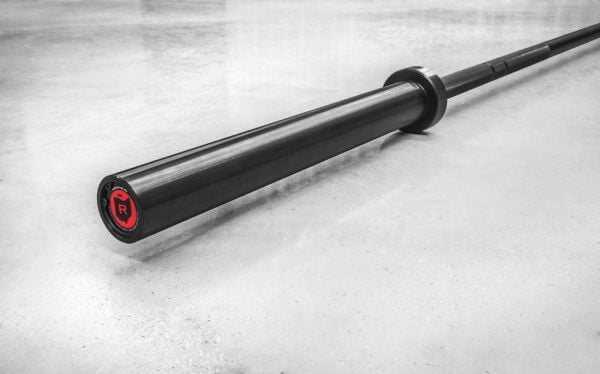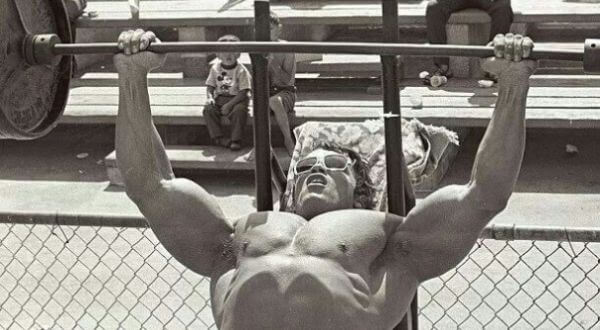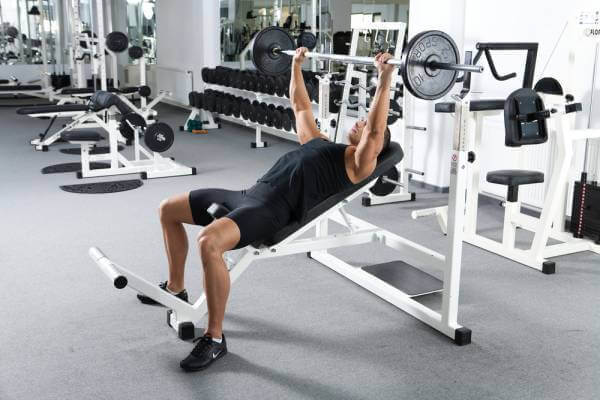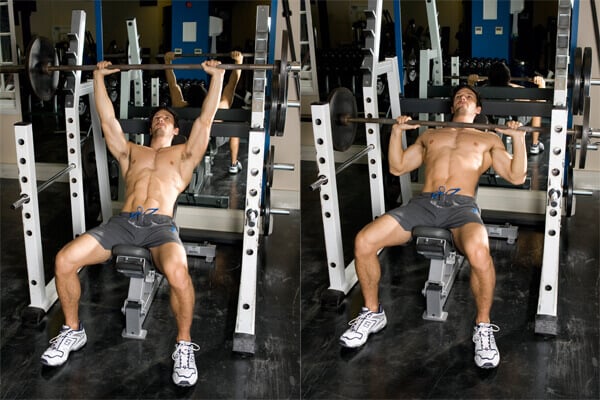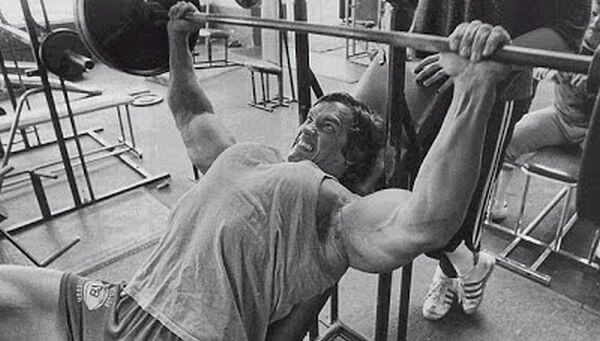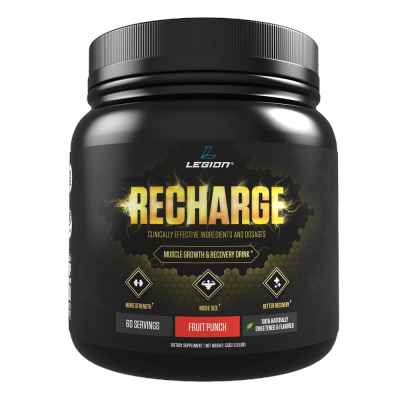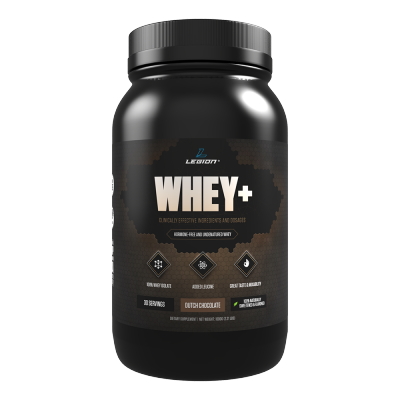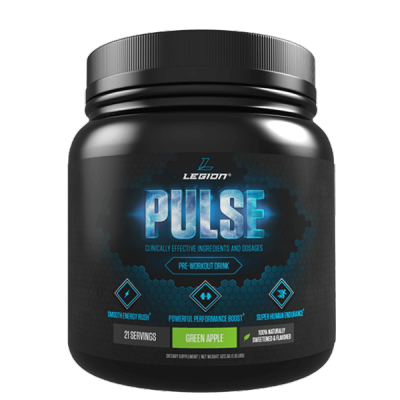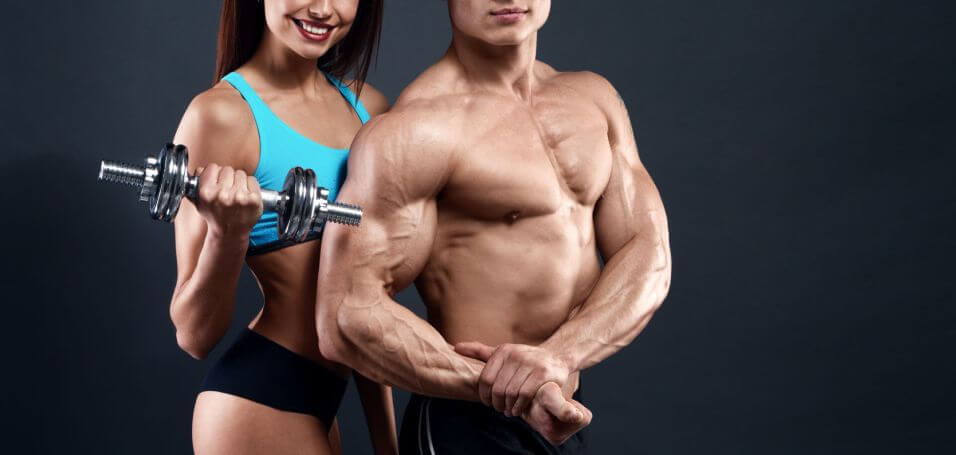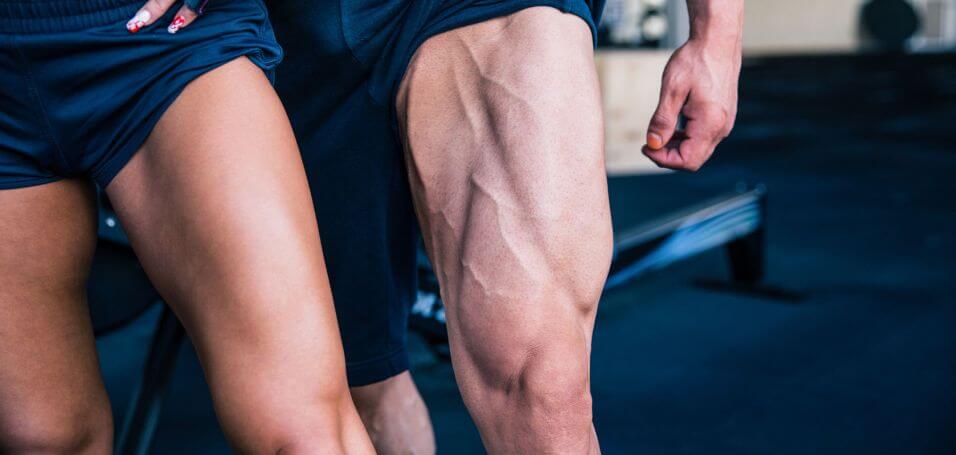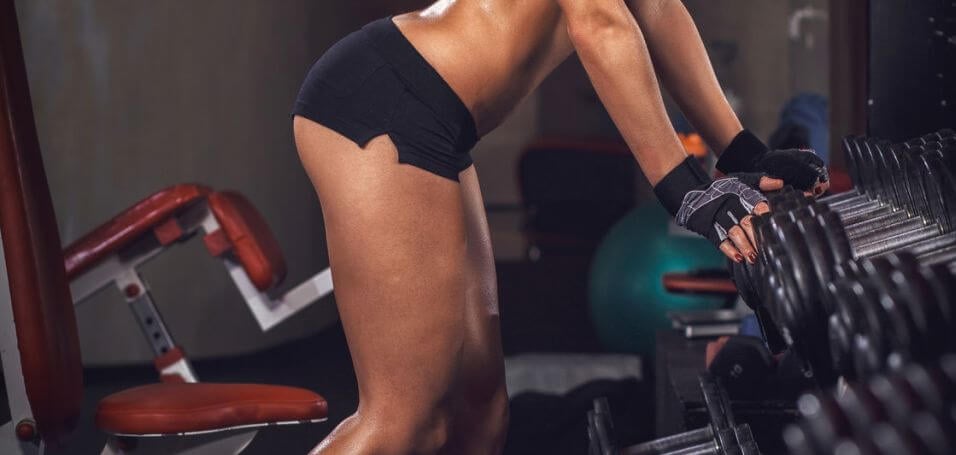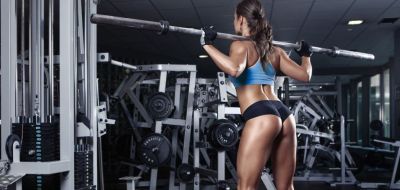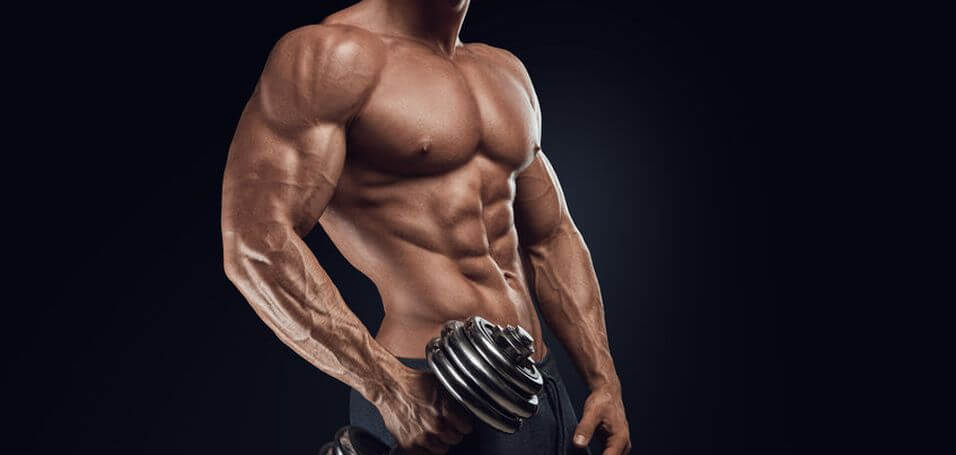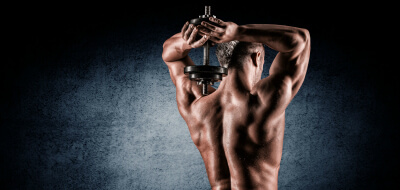I used to hate my chest.
It was big but bottom heavy, which made it look imbalanced, and it dwarfed my shoulders and arms.
Here’s what I’m talking about:
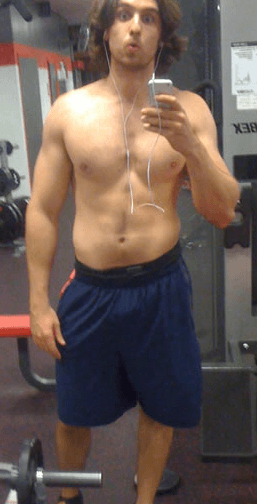
That’s a picture of me after about 7 years of consistent weightlifting, mainly following workouts I had gotten from bodybuilding magazines.
Yeah, you can say it: not very impressive.
Well, soon after this picture was taken, I got my act together. I ditched the magazines and turned to textbooks and science, and quickly learned how many mistakes I was making.
For example…
- I was focusing on high-rep “burnout” workouts.
This is basically the exact opposite of what you want to do as a natural weightlifter.
- I was doing way too many isolation exercises.
Nobody has built an impressive physique with leg extensions, lat pulldowns, and pec deck flyes.
- I cared too much about what I ate instead of how much.
I’m all for “clean eating” for nutritional purposes but it guarantees nothing in the way of muscle growth and fat loss.
- I failed to progressively overload my muscles.
This is the cornerstone of muscle growth, and especially when your “newbie gains” are exhausted.
- I didn’t track my progress.
Your goal, every time you hit the gym, is to do a little better than your last workout. And the only way to do that is to log your training each week.
I dramatically changed the way I ate and trained, and here’s what happened next:
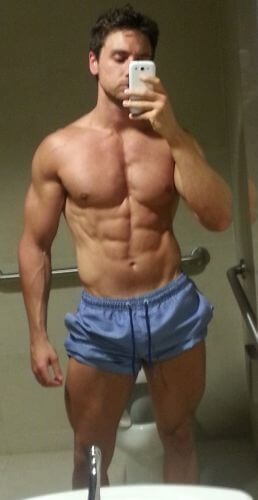
That picture was taken about 2.5 years after the first, and as you can see, the results speak for themselves.
I improved every aspect of my physique, but I’m particularly happy with how my chest has changed.
I no longer have round, disproportionate pecs and instead have something closer to the flat and full “armor plate” look that we all aspire to.
How did I do it, though?
Well, it turns out my “upper chest” was the key. It was horribly under-developed in comparison to the larger, lower portions of my pecs.
“But wait,” I can hear you thinking, “isn’t the ‘upper chest’ just a myth?”
Nope. It’s just often misunderstood and mismanaged.
To wit, many people think the upper chest is something it isn’t, and fail to address it properly in their training.
That’s why so many guys have the same problem I once did.
And if that’s you, then you’ve come to the right article. By the end, you’re going to know exactly how to build your upper chest (and your entire chest, too) faster than you ever thought possible.
So let’s get started.
Table of Contents
+What Is the “Upper Chest” Anyway?
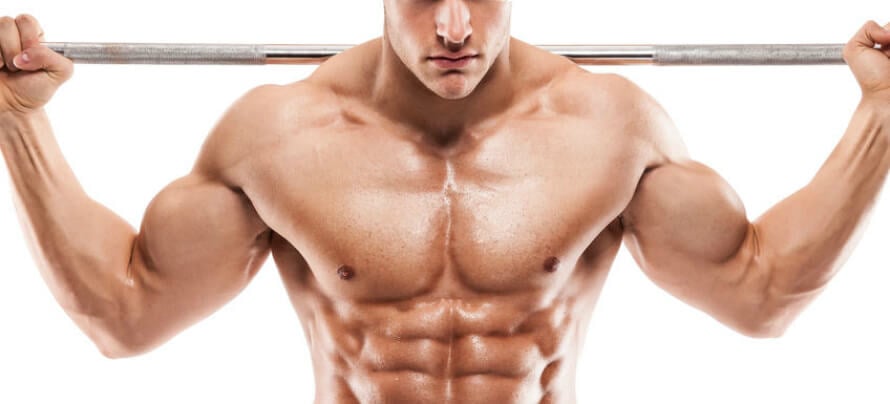
Many people think the upper chest is an old bro’s tale, like negative-calorie foods or “muscle confusion.”
They’re wrong.
Many other people think the upper chest exists, but can’t or doesn’t need to be specially addressed in your training.
They’re wrong too.
To find out why, let’s start at the top.
There is a part of the “chest muscle” that forms what we call the “upper chest.” It’s known as the clavicular pectoralis and here’s what it looks like:
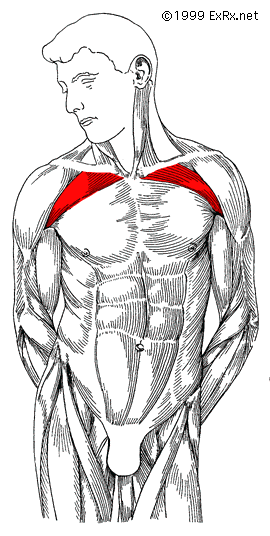
As you can see, this muscle is a part of the big chest muscle (the pectoralis major), but its muscle fibers are at a different angle.
This is why research shows that certain exercises, like the flat and decline bench press, emphasize the main (large) portion of the chest muscle, whereas others, like the incline and reverse-grip bench press, emphasize the smaller upper portion.
Notice that I said emphasize and not isolate.
That’s because all chest exercises that emphasize one portion of the muscle do, to some degree, involve the others.
Nevertheless, one of the most important lessons I learned about building a chest is this:
Ideal chest development requires a lot of emphasis on the clavicular pectoralis.
There are two reasons for this:
1. It’s a small, stubborn muscle that is easily overshadowed by the pec major.
Big muscles grow faster than smaller muscles and flat and decline pressing places more emphasis on the larger portion of the pecs than the upper.
Hence, the problem of the upper chest failing to keep up with the rest of the pecs.
2. The best exercises for the upper chest also happen to be great for growing the other parts of the chest.
For example, incline pressing is one of the best ways to ensure your upper chest doesn’t fall behind. It’s also extremely effective for developing the rest of your chest.
(Reverse-grip bench pressing is helpful too, which we’ll talk more about soon.)
Just to really drive this point home, let’s look at a few more visuals.
First, check out the following picture of me:

This was a “midpoint” in the transformation I shared in the beginning of the article, and as you can see, I was making good progress.
Look at the upper portion of my right pec , though (my left looks larger than it was due to how I was holding the phone).
As you can see, my chest was still dominated by my pec major due to a still-lagging upper chest.
Well, I’ve done exactly what I recommend in this article, and here’s where I’m at now:
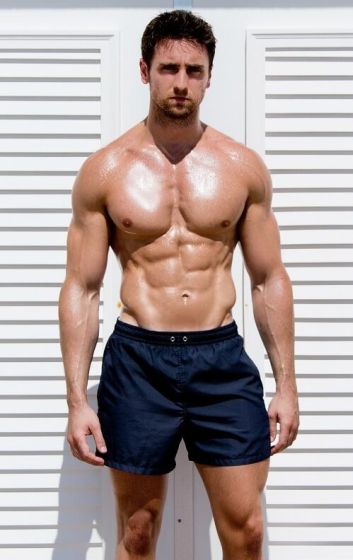
Again, focus on the upper portion of my pecs.
Quite a difference, no?
Here’s how I did it…
The Simple Science of Effective Chest Workouts
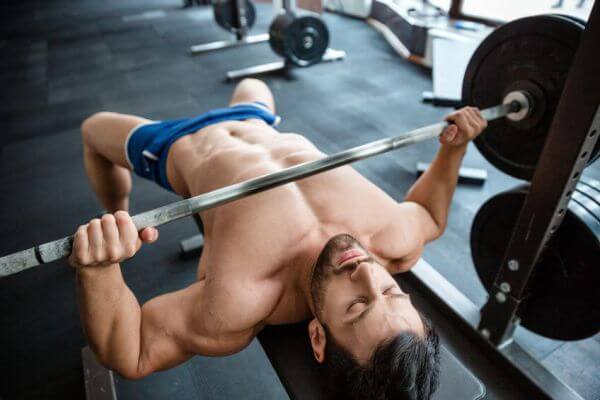
I used to make two major mistakes in my chest workouts:
1. I did too much of the wrong chest exercises.
I spent far too much time on machines and isolation exercises and far too little time on compound movements like presses and dips.
2. I did too much high-rep training.
Training to get a pump (rather than to get stronger) is one of the easiest ways to hit a plateau.
(And this applies to every major muscle group in the body, including your chest (and upper chest).
When I started doing the opposite–more compound movements than isolation, and more heavy training–I started seeing real changes in my chest (and entire physique) for the first time in a long time.
This brings me to one of the biggest lessons I’ve learned about weightlifting and building muscle naturally:
If you want to build muscle consistently and effectively, you want to focus on heavy (80 to 85% of your one-rep max) compound weightlifting.
In terms of chest workouts, that means your bread and butter is heavy barbell and dumbbell pressing, and your dessert is supplementary work like dips and flyes.
“But wait a minute,” you might be thinking. “[SHREDDED FITNESS MODEL] does fifteen different exercises and a billion reps in his chest workouts and he has amazing pecs… What gives?”
Well first, genetics and training history matter a lot, but then there’s the #dedication. All 2 grams of it that he injects every week.
I know that sounds cynical, but it’s true. Steroids change everything.
With the right drugs, someone can basically sit in the gym for a few hours every day doing set after set, exercise after exercise, and his muscles will just get bigger and bigger.
(A bit of an overstatement, I know, but it’s more accurate than inaccurate.)
You’ve probably also noticed that (open or obvious) steroid users have abnormally large shoulders, traps, and pecs (and upper chests in particular).
This is because these areas of the body are quite dense in androgen receptors, which are proteins in cells that respond to various hormones (including anabolic hormones like testosterone).
Thus, when large amounts of anabolic hormones are introduced into the body, the shoulders, traps, and pecs grow very quickly and can reach freaky levels of size.
Don’t be discouraged, though.
You can build a great chest drug-free with a bit of know-how, hard work, and patience.
Here’s what it boils down to:
Focus on lifting heavy weights in your chest workouts.
And by “heavy,” I mean working primarily in the 4 to 6/5 to 7 rep range.
Focus on the chest exercises that safely allow for progressive overload.
Here’s a simple maxim of natural weightlifting:
If you stop getting stronger, you’ll stop getting bigger.
Regardless of all the variables that go into programming workouts, you can take that to the bank.
The number one rule of natural muscle building is progressive overload, which refers to progressively increasing tension levels in the muscle over time.
The most effective way to do this is adding weight to the bar.
Certain exercises don’t lend themselves well to both heavy lifting and progressive overload, though. For example, heavy dumbbell flyes increase the risk of injuring your rotator cuff muscles.
Another element of your chest workouts that you have to get right is weekly volume (the total amount of reps you do each week).
If you do too few reps each week, you’ll gain less muscle than you should or could. If you do too many, you won’t be able to fully recover from your workouts and, in time, you’ll gain less muscle than you should or could.
Finding the “sweet spot” can be tricky because when you’re doing a lot of heavy weightlifting because the heavier the reps, the fewer you can do each week.
The reason for this is obvious: heavier weights necessitate more recovery time.
I’ve tried many different workout splits and frequency schemes and what I’ve found works best is in line two extensive reviews on the subject.
When you’re primarily training with heavy weights (80 to 85%+ of your 1RM), optimal volume seems to be about 60 to 70 reps performed every 5 to 7 days.
This applies to every major muscle group in the body, not just the chest.
You May Also Like
The Best Exercises for the Upper Chest
Browse the Internet for a few minutes for chest exercises and you’ll quickly be overwhelmed.
There are hundreds you can choose from, but very few are actually necessary for achieving your goals.
In fact, here’s the very short list of the best upper chest exercises:
- Incline Barbell Bench Press
- Incline Dumbbell Bench Press
- Reverse-Grip Bench Press
These are the only exercises you need to build a fantastic upper chest. Period.
And if we’re talking overall chest development, we only need to add a few more to that list:
- Flat Barbell Bench Press
- Flat Dumbbell Bench Press
- Close-Grip Bench Press
- Dip (Chest Version)
If you’re new to weightlifting, forget cable work, dumbbell flys and pullovers, push-up variations, machines, and every other type of chest exercise out there.
They may be relevant to the advanced bodybuilder that is trying everything he can to squeeze the last bits of size out of his physique, but that’s probably not you (and it’s not me, either).
The bottom line is these supplementary exercises are not nearly as effective as the core, foundation-building lifts I recommend in this article.
So, let’s take a closer look at how to do each of the exercises I recommend.
Incline Bench Press
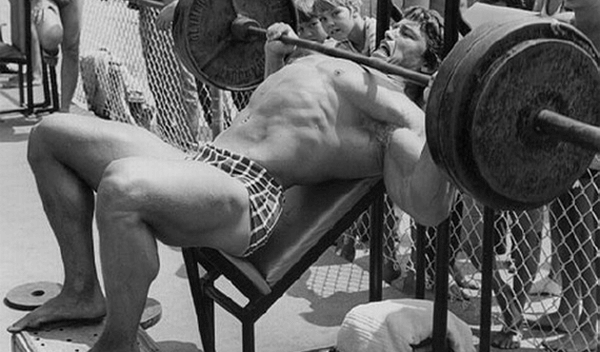
If you want a full upper chest, you want to do a lot of incline bench pressing.
And if you’re going to do a lot of incline bench pressing, you want to make sure you’re doing it right.
Let’s learn how.
Can I Use the Smith Machine?
Many people turn to the Smith Machine for pressing because it’s easier and safer.
The downside, however, is it also produces smaller gains in muscle and strength than the free weight pressing.
The same is true for squatting as well.
The reason for this is the Smith Machine has a fixed, level bar that moves on a fixed, perfectly vertical path.
A free weight bar, on the other hand, requires that you work to keep the bar level and moving straight up and down. This engages a number of smaller muscles that get left out of the party on the Smith Machine.
I should know because I used to do all my bench pressing on the Smith Machine.
I could put up maybe 245 pounds for a few reps, and when I first switched to the free weight bench press, I struggled with 185 pounds.
I never looked back.
How Can I Incline Bench Press Safely?
The Smith Machine’s greatest allure is safety. Basically, it prevents you from dropping a bar on your face.
What many people don’t know, though, is you can achieve the same level of safety on the free weight bench press by using the right setup.
A spotter is the easiest way to stay safe, but that’s not always an option. That’s why your best bet is a Power Cage.
Here’s a fantastic one made by Rogue, which I highly recommend:
The safety arms are the key for safe bench pressing. If you set them at the right height, they will catch the weight if/when you fail.
Here’s how to do it:
Your bench and barbell matter too.
You want to make sure your bench is large enough to support your entire upper back and remain stable while you press (12″ wide is a good rule of thumb).
Again, I highly recommend Rogue’s bench:
And while you might think a barbell is a barbell, but I recommend you pony up for a high-quality bar with sleeves that can spin independently of the bar.
That is, the plates should be able to rotate without torquing the bar, which can put a lot of strain on your wrists.
I like Rogue’s Ohio Bar:
Let’s now review how to perform each of the major exercises given earlier.
How to Incline Bench Press with Good Form
Every well-designed weightlifting program includes the bench press as one of its core exercises.
It’s simply one of the best all-around upper body exercises you can do because it involves the pectorals, lats, shoulders, triceps, and even the legs to a slight degree.
It’s relatively simple too.
You lie on a bench with your feet on the floor, unrack the bar, lower it to the middle of your chest, and press it back up.
That said, there are many ways to do that, and unfortunately, many more wrong than right ways.
That’s why learning proper bench press form is crucial. It makes sure you can progress safely into heavier and heavier weights and thus continue to progressively overload your chest.
So, to learn the right way, let’s break the bench press down into its different components, starting with the setup.
How to Set Up for the Incline Bench Press
A good setup precedes a good bench press, and the equipment you use has a significant impact on this.
Let’s start with setting up the bench.
I recommend you set the bench between 30 and 45 degrees for incline pressing.
If you go much higher than that, you turn the exercise into something more like a military press.
Here’s what that looks like:
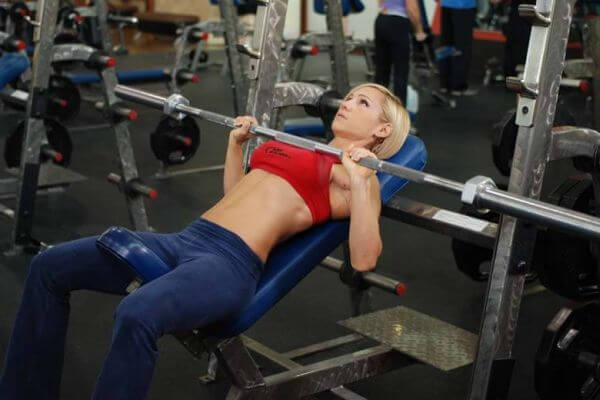
Once you have your equipment ready, it’s time to get your body in the right position to press.
Let’s look at each step
1. Lie down on the bench and adjust so your eyes are under the bar.
2. Raise your chest up and tuck your shoulder blades down and squeeze them together.
You should feel tightness in your upper back, and you want to maintain this position throughout the entire lift.
3. Grab the bar with your hands slightly wider than shoulder-width apart.
Hold the bar low in your hands, closer to your wrists than your fingers, and squeeze it as hard as you can.
To prevent wrist pain, your wrists should be straight up and down, not bent toward your head.

A good way to check your grip width is to have a friend get behind you and look at the position of your forearms at the bottom of the movement.
You want your forearms as close to straight-up-and-down vertical as possible, like this:

As you can see, the position on the far left is too wide, the middle is too narrow, and the far right is correct.
4. Slightly arch your lower back and plant your feet on the ground, directly under your knees, shoulder-width apart.
You don’t want your lower back flat on the bench and you don’t want it so arched that your butt is lifting off, either.
Instead, you want to maintain the natural arch that occurs when you push your chest out.
5. Unrack the weight by straightening your arms and then moving it horizontally until it’s directly over your shoulders.
You’re now ready to press.
Make sure you set up this way every time you bench press, whether you’re just warming up or going for a PR.
It’s a good technique-building habit that will pay off in better lifts and a lower risk of injury.
How to Descend
If you’re going to bench press heavy weights safely, you need to know how to tuck your elbows properly.
The most common mistake is flaring the elbows out and away from the torso during the lift.
This places a lot of strain on the shoulder and can even lead to injuries, and is a big reason why the bench press has a bad rap as a shoulder devastator.
Instead, you want your elbows at a 50- to 60-degree angle relative to your torso.
This protects your shoulders from injury and is a stable, strong position to press from. Here’s a helpful visual:

The position wherein the arms are closest to the body is about 20 degrees. This is too close.
The middle position is about 60 degrees, which is ideal.
And the topmost position is 90 degrees, which is too high (flared).
With your elbows tucked and in place, lower the bar to the upper portion of your chest.
And yes, the bar should touch your chest. No half-repping! 🙂
In terms of tempo, lower the bar in a controlled manner. It should reach your chest in 1 to 2 seconds.
Don’t simply let the bar drop toward your body.
Instead, imagine you’re pulling the bar down toward your chest in a controlled manner because it will help you maintain the proper body position for generating maximum vertical force.
Another good tip is as you descend, try to actually bend the bar in half or “pull it apart.” This will help you to keep your shoulder blades retracted and will also help you generate more force when you ascend.
This is one of the reasons you can move more weight on the barbell bench press than dumbbell.
(You can’t generate this lateral force with dumbbells as they would simply move away from each other.)
How to Ascend
Once the bar has touched your chest, your goal is to explode it upward as forcefully as you can.
Some people think that super-slow reps are best for building muscle and strength, but research shows otherwise.
- A study conducted by scientists at the University of Sydney found that subjects following traditional “fast” training on the Bench Press gained more strength than slow training.
- A study conducted by researchers at the University of Connecticut found that very-slow training resulted in lower levels of peak force and power when compared with a normal, self-regulated tempo.
- A study conducted by scientists at the University of Wisconsin found that even in untrained individuals a traditional training tempo resulted in greater strength in the squat and greater peak power in the countermovement jump.
- A study conducted by researchers at the University of Oklahoma found that 4 weeks of traditional resistance training was more effective for increasing strength than super-slow training.
Furthermore, research shows that when bench pressing, lowering the bar quickly (1 second) and, without pause, then exploding it upward results in greater power gains than a slow descent followed by a pause and explosive ascent.
So, do just that:
Lower the bar in a second or two and explode it up as quickly as you can.
Now, let’s talk technique.
Nothing changes with your body position as you ascend. Your shoulder blades remain down and pinched, your elbows tucked, your lower back slightly arched, your butt on the bench, and your feet on the floor.
And although it’s called the bench press, it’s better to think of the ascension as pushing rather than pressing.
Think of it pushing your torso away from the bar and into the bench instead of pressing the bar away from your torso.This will help with form and power.
The bar should move upward on a slightly diagonal path to end where it began: directly over your shoulders.
Don’t keep your elbows slightly bent at the top. Lock them out.
How to Rack the Bar
Don’t try to press the bar directly into the hooks because if you miss, it’s coming down on your face.
Instead, finish your rep with the bar directly over your shoulders and your elbows locked and then shift the bar horizontally into the uprights.
Putting It All Together
That’s a lot to visualize, so here’s a good video that shows it all in action:
Incline Dumbbell Press
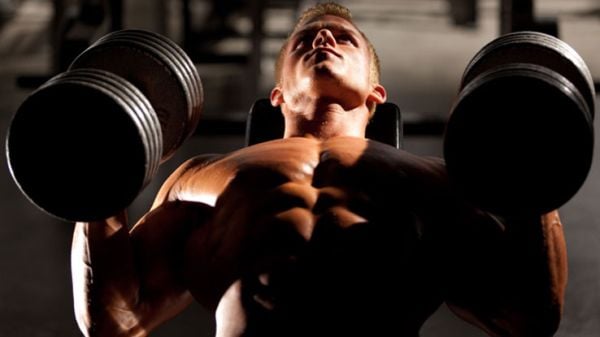
Dumbbell pressing isn’t better or worse than barbell pressing–it’s just different.
Research shows that both forms of pressing stimulate the chest similarly but barbell pressing involves the triceps more and dumbbell pressing involves the biceps more.
Here’s how to do it:
Reverse-Grip Bench Press

The reverse-grip bench press is an often-overlooked variation of the bench press that has merit.
It involves flipping your grip around on the bar (so your palms face you) and not only is it easier on your shoulders but it’s also particularly effective for targeting the upper chest.
Here’s how to do it:
Remember–Progression Is the Key
Before we talk upper chest workouts, I want to make sure you understand a vitally important part of weightlifting in general:
The key isn’t just doing exercises–it’s progressing on them.
And as a natural weightlifter, the most important type of progression is overload.
That is, increasing the amount of weight you can move over time.
The reality is if you want any part of your body to get more muscular, the best way to do this is make it stronger.
If you do that, and if you eat enough food, your muscles will grow.
The Ultimate Upper Chest Workout
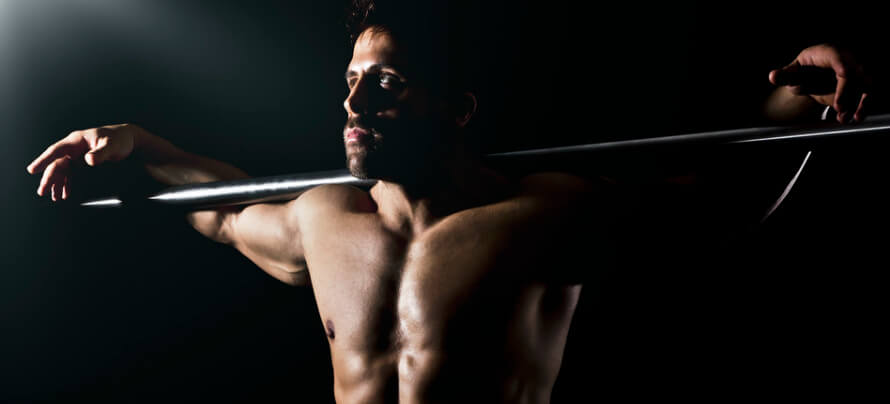
As you know, a good upper chest workout focuses on heavy incline pressing.
Other exercises like flat and decline pressing and dips can be done as well, but they should come after your heavy incline sets.
You can learn more about programming workouts in my books Bigger Leaner Stronger (men) and Thinner Leaner Stronger (women), but I want to give you a simple workout that you can do for the next 8 weeks to see how my advice works for you.
What I want you to do over the next 8 weeks is perform the following upper chest workout once every 5 – 7 days:
Incline Barbell Bench Press
Warm up and 3 sets of 4 – 6 reps
Incline Dumbbell Bench Press
3 sets of 4 – 6 reps
Flat Barbell Bench Press
3 sets of 4 – 6 reps
Optional
Dips (Chest Version)
3 sets to failure
That’s it; just 9 heavy sets for your entire workout with 3 optional bodyweight sets.
Rest 3 minutes in between each heavy set and 1 minute in between the bodyweight sets.
This will give your muscles enough time to fully recoup their strength so you can give maximum effort each set.
Once you hit the top of your rep range for one set, you move up in weight.
For instance, if you get on the incline bench and push out 6 reps on your first set, you add 5 pounds to each side of the bar for your next set and work with that weight until you can press it for 6 reps, and so forth.
I guarantee that if you do this workout and eat right for the next 8 weeks, your upper chest will get bigger and stronger.
What About Supplements?
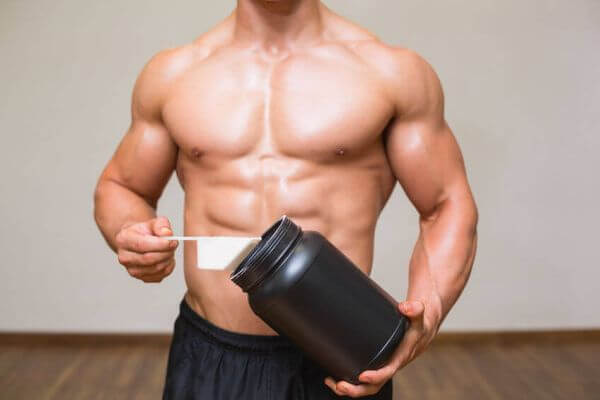
I saved this for last because, quite frankly, it’s far less important than proper diet and training.
You see, supplements don’t build great physiques–dedication to proper training and nutrition does.
Unfortunately, the workout supplement industry is plagued by pseudoscience, ridiculous hype, misleading advertising and endorsements, products full of junk ingredients, underdosing key ingredients, and many other shenanigans.
Most supplement companies produce cheap, junk products and try to dazzle you with ridiculous marketing claims, high-profile (and very expensive) endorsements, pseudo-scientific babble, fancy-sounding proprietary blends, and flashy packaging.
So, while workout supplements don’t play a vital role in building muscle and losing fat, and many are a complete waste of money…the right ones can help.
The truth of the matter is there are safe, natural substances that have been scientifically proven to deliver benefits such as increased strength, muscle endurance and growth, fat loss, and more.
As a part of my work, it’s been my job to know what these substances are, and find products with them that I can use myself and recommend to others.
Finding high-quality, effective, and fairly priced products has always been a struggle, though.
That’s why I took matters into my own hands and decided to create my own supplements. And not just another line of “me too” supplements–the exact formulations I myself have always wanted and wished others would create.
I won’t go into a whole spiel here, but if you want to learn more about my supplement line, check this out. (And if you’d like to know exactly what supplements to take to reach your fitness goals, take the Legion Supplement Finder Quiz.)
For the purpose of this article, let’s just quickly review the supplements that are going to help you get the most out of your chest (and other) workouts.
Creatine
Creatine is a substance found naturally in the body and in foods like red meat. It’s perhaps the most researched molecule in the world of sport supplements–the subject of hundreds of studies–and the consensus is very clear:
Supplementation with creatine helps…
You may have heard that creatine is bad for your kidneys, but these claims have been categorically and repeatedly disproven. In healthy subjects, creatine has been shown to have no harmful side effects, in both short- or long-term usage. People with kidney disease are not advised to supplement with creatine, however.
If you have healthy kidneys, I highly recommend that you supplement with creatine. It’s safe, cheap, and effective.
In terms of specific products, I use my own, of course, which is called RECHARGE.
RECHARGE is 100% naturally sweetened and flavored and each serving contains:
- 5 grams of creatine monohydrate
- 2100 milligrams of L-carnitine L-tartrate
- 10.8 milligrams of corosolic acid
This gives you the proven strength, size, and recovery benefits of creatine monohydrate plus the muscle repair and insulin sensitivity benefits of L-carnitine L-tartrate and corosolic acid.
Protein Powder
You don’t need protein supplements to gain muscle, but, considering how much protein you need to eat every day to maximize muscle growth, getting all your protein from whole food can be impractical.
That’s the main reason I created (and use) a whey protein supplement. (There’s also evidence that whey protein is particularly good for your post-workout nutrition.)
WHEY+ is 100% naturally sweetened and flavored whey isolate that is made from milk sourced from small dairy farms in Ireland, which are known for their exceptionally high-quality dairy.
I can confidently say that this is the creamiest, tastiest, healthiest all-natural whey protein powder you can find.
Pre-Workout Drink
There’s no question that a pre-workout supplement can get you fired up to get to work in the gym. There are downsides and potential risks, however.
Many pre-workout drinks are stuffed full of ineffective ingredients and/or minuscule dosages of otherwise good ingredients, making them little more than a few cheap stimulants with some “pixie dust” sprinkled in to make for a pretty label and convincing ad copy.
Many others don’t even have stimulants going for them and are just complete duds.
Others still are downright dangerous, like USPLabs’ popular pre-workout “Jack3d,”which contained a powerful (and now banned) stimulant known as DMAA.
Even worse was the popular pre-workout supplement “Craze,” which contained a chemical similar to methamphetamine.
The reality is it’s very hard to find a pre-workout supplement that’s light on stimulants but heavy on natural, safe, performance-enhancing ingredients like beta-alanine, betaine, and citrulline.
And that’s why I made my own pre-workout supplement. It’s called PULSE and it contains 6 of the most effective performance-enhancing ingredients available:
- Caffeine. Caffeine is good for more than the energy boost. It also increases muscle endurance and strength.
- Beta-Alanine. Beta-alanine is a naturally occurring amino acid that reduces exercise-induced fatigue, improves anaerobic exercise capacity, and can accelerate muscle growth.
- Citrulline Malate. Citrulline is an amino acid that improves muscle endurance, relieves muscle soreness, and improves aerobic performance.
- Betaine. Betaine is a compound found in plants like beets that improves muscle endurance, increases strength, and increases human growth hormone and insulin-like growth factor 1 production in response to acute exercise.
- Ornithine. Ornithine is an amino acid found in high amounts in dairy and meat that reduces fatigue in prolonged exercise and promotes lipid oxidation (the burning of fat for energy as opposed to carbohydrate or glycogen).
- Theanine. Theanine is an amino acid found primarily in tea that reduces the effects of mental and physical stress, increases the production of nitric oxide, which improves blood flow, and improves alertness, focus, attention, memory, mental task performance, and mood.
And what you won’t find in PULSE is equally special:
- No artificial sweeteners or flavors..
- No artificial food dyes.
- No unnecessary fillers, carbohydrate powders, or junk ingredients.
The bottom line is if you want to know what a pre-workout is supposed to feel like…if you want to experience the type of energy rush and performance boost that only clinically effective dosages of scientifically validated ingredients can deliver…then you want to try PULSE.
Again, if you feel confused about what supplements you should take to reach your goals, take the Legion Supplement Finder Quiz to learn exactly what supplements are right for you. It’s the best way to ensure you get the most out of your supplement regimen.
The Bottom Line on Upper Chest Workouts
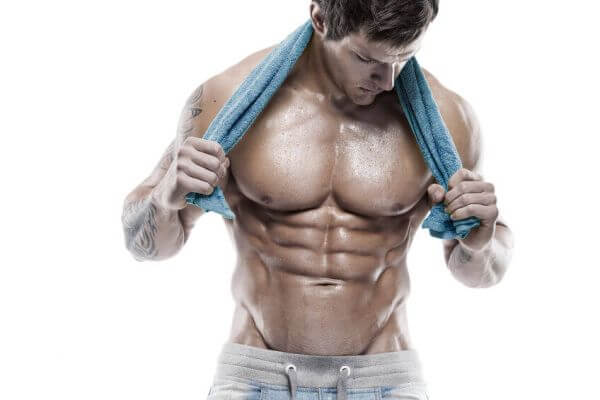
Building a great chest isn’t as hard as you might think.
If you follow the advice in this article–if you hit your chest workouts hard, make sure you’re progressing over time, and eat right–you will build the chest you want.
Keep in mind, though, that it may take longer than you think.
Most guys find that it takes up to 3 years to get a set of pecs they’re truly happy with, and some find it takes even longer.
Don’t let that discourage you, though.
Focus on the here and now–tackle it one workout at a time–and celebrate each milestone along the way, and you’ll get there.
Want More Workouts?
The Best Shoulder Workouts for Men & Women
The 6 Absolute Best Quads Exercises You Can Do
The 6 Best Hamstring Exercises You Need to Do
The 7 Best Butt Exercises That Will Give You Glorious Glutes
The Absolute Best Biceps Workout

The Absolute Best Triceps Workout
The Definitive Full-Body Workout Guide
The Ultimate Forearm Workout
17 Bodyweight Exercises That Will Skyrocket Your Gains
What’s your take on upper chest workouts? Have anything else to share? Let me know in the comments below!
+ Scientific References
- Trebs AA, Brandenburg JP, Pitney WA. An electromyography analysis of 3 muscles surrounding the shoulder joint during the performance of a chest press exercise at several angles. J strength Cond Res. 2010;24(7):1925-1930. doi:10.1519/JSC.0b013e3181ddfae7
- Saeterbakken AH, van den Tillaar R, Fimland MS. A comparison of muscle activity and 1-RM strength of three chest-press exercises with different stability requirements. J Sports Sci. 2011;29(5):533-538. doi:10.1080/02640414.2010.543916
- Pryor RR, Sforzo GA, King DL. Optimizing power output by varying repetition tempo. J strength Cond Res. 2011;25(11):3029-3034. doi:10.1519/JSC.0b013e31820f50cb
- Kim E, Dear A, Ferguson SL, Seo D, Bemben MG. Effects of 4 weeks of traditional resistance training vs. superslow strength training on early phase adaptations in strength, flexibility, and aerobic capacity in college-aged women. J strength Cond Res. 2011;25(11):3006-3013. doi:10.1519/JSC.0b013e318212e3a2
- Neils CM, Udermann BE, Brice GA, Winchester JB, McGuigan MR. Influence of contraction velocity in untrained individuals over the initial early phase of resistance training. J strength Cond Res. 2005;19(4):883-887. doi:10.1519/R-15794.1
- Hatfield DL, Kraemer WJ, Spiering BA, et al. The impact of velocity of movement on performance factors in resistance exercise. J strength Cond Res. 2006;20(4):760-766. doi:10.1519/R-155552.1
- Munn J, Herbert RD, Hancock MJ, Gandevia SC. Resistance training for strength: effect of number of sets and contraction speed. Med Sci Sports Exerc. 2005;37(9):1622-1626. doi:10.1249/01.mss.0000177583.41245.f8
- Duffey MJ, Challis JH. Vertical and lateral forces applied to the bar during the bench press in novice lifters. J strength Cond Res. 2011;25(9):2442-2447. doi:10.1519/JSC.0b013e3182281939
- Schwanbeck S, Chilibeck PD, Binsted G. A comparison of free weight squat to Smith machine squat using electromyography. J Strength Cond Res. 2009;23(9):2588-2591. doi:10.1519/JSC.0b013e3181b1b181
- Schick EE, Coburn JW, Brown LE, et al. A comparison of muscle activation between a Smith machine and free weight bench press. J strength Cond Res. 2010;24(3):779-784. doi:10.1519/JSC.0b013e3181cc2237
- Wernbom M, Augustsson J, Thomeé R. The influence of frequency, intensity, volume and mode of strength training on whole muscle cross-sectional area in humans. Sport Med. 2007;37(3):225-264. doi:10.2165/00007256-200737030-00004
- Kadi F, Bonnerud P, Eriksson A, Thornell LE. The expression of androgen receptors in human neck and limb muscles: Effects of training and self-administration of androgenic-anabolic steroids. Histochem Cell Biol. 2000;113(1):25-29. doi:10.1007/s004180050003
- Trebs AA, Brandenburg JP, Pitney WA. An electromyography analysis of 3 muscles surrounding the shoulder joint during the performance of a chest press exercise at several angles. J strength Cond Res. 2010;24(7):1925-1930. doi:10.1519/JSC.0b013e3181ddfae7
